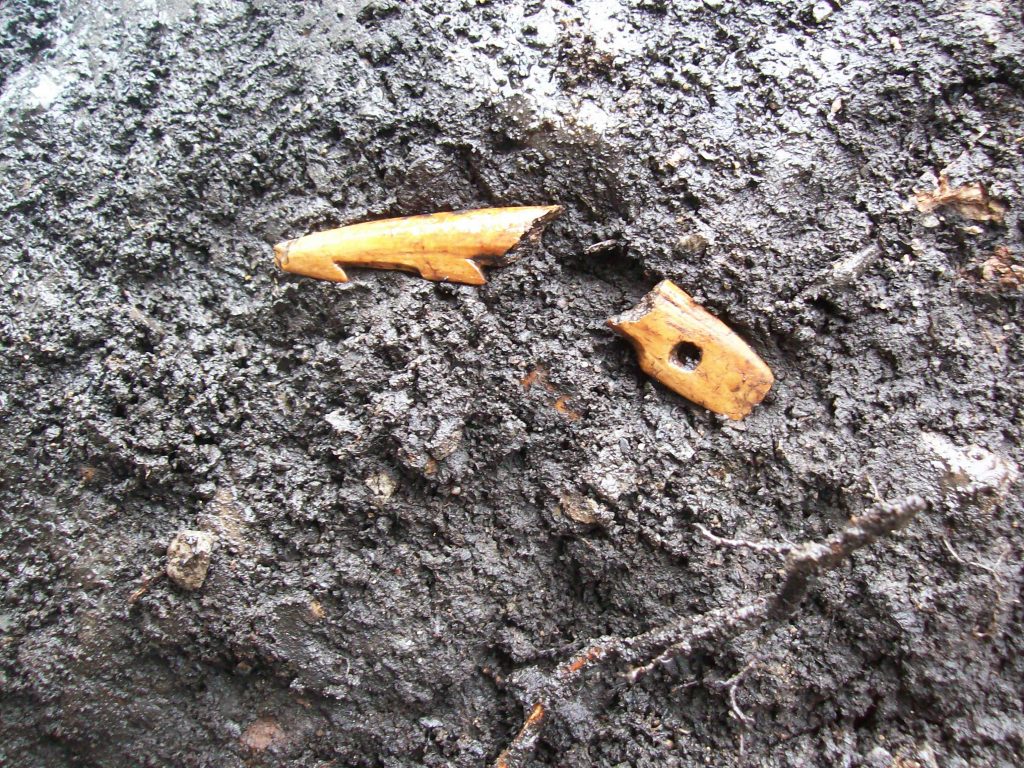Drilled Line Hole Harpoons
Today’s showcase items are unilaterally barbed harpoon points with drilled line perforations from the Prince Rupert Harbour sites of GbTo-13 and 54. We’ve found a plugin that allows you to zoom in on the full resolution photo – click on the image and try it! We think these are some of the clearest artifact illustrations you’ll find anywhere. Great work, Andrew Eckert!

This style of harpoon point is large enough to hunt sea mammals. Likely, the size of the hole (which would take the retrieving line) can be correlated with the size of animal being hunted. The six examples on the right are amazingly consistent, all about 3-4 mm diameter. This would seem to be a pretty small line; would it even hold something as big as a seal? Maybe they were for slightly smaller animals such as river otter or sea otter, or even beaver. The larger two at left have broken on the shoulder; both have been converted to a ‘line guard’ and the edge re-ground to make a quick repair. The drilled line perforations on all these appear to be consistently off centered. Could this be a coincidence, or is it functional?

Stay tuned for more bone and slate barbed harpoon points (yes, the slate points have line retrievals and line guards!), and show some of the spatial analysis we are doing with harpoons. We’ll be able to correlate the harpoon types with various layers, areas of the site, and see how they relate to the faunal remains; maybe we’ll be able to show that the weapons having small line holes tend to occur near one species (for instance, seals) but not near another (for instance, sea otters).
We hope we’ll be able to use the harpoon styles to identify smaller time periods for the North Coast than is currently possible.
